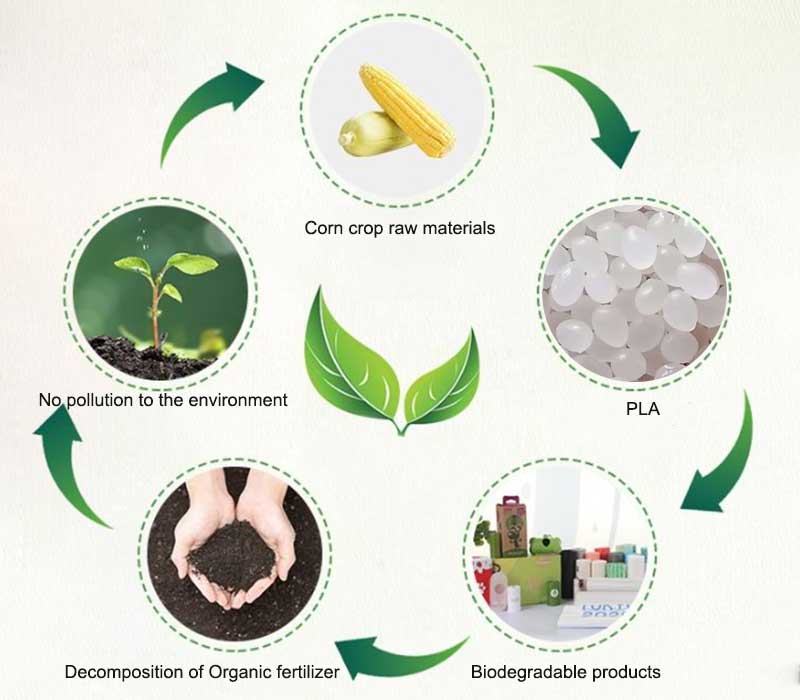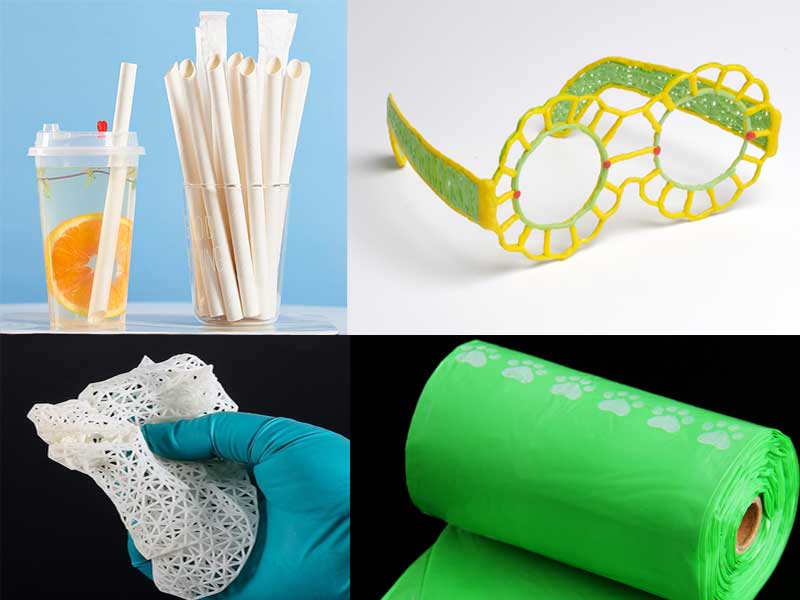“Low carbon living” has become a mainstream topic in the new era. In recent years, green environmental protection, energy conservation, and emission reduction have gradually entered the public’s vision, and have also become a new trend advocated and increasingly popular in society. In the green and low-carbon era, the use of biodegradable products is considered an important symbol of low-carbon life, and is widely respected and disseminated.
With the acceleration of the pace of life, disposable foam plastic lunch boxes, plastic bags, chopsticks, water cups and other items have become ubiquitous in life. Different from paper, cloth and other materials, plastic products are discarded in nature and difficult to be degraded. While bringing convenience to people’s lives, excessive use can also cause “white pollution”. In this context, biodegradable biomaterials have emerged. Biodegradable materials are an emerging material that has significant advantages in terms of environmental performance compared to traditional disposable plastic products. Products manufactured using biodegradable biomaterials as raw materials have a huge market space and become an important carrier of the fashionable low-carbon lifestyle concept.
There are many types of biodegradable materials, including PCL, PBS, PBAT, PBSA, PHA, PLGA, PLA, etc. Today we will focus on the emerging biodegradable material PLA.
PLA, also known as polylactic acid, CAS 26023-30-3 is a starch raw material that is fermented to produce lactic acid, which is then converted into polylactic acid through chemical synthesis and has good biodegradability. After use, it can be completely degraded by microorganisms in nature, ultimately producing carbon dioxide and water without polluting the environment. The environment is very favorable, and PLA is recognized as an environmentally friendly material with excellent biological properties.
The main raw materials of PLA are renewable plant fibers, corn and other agricultural and sideline products, and PLA is an important branch of biodegradable emerging materials. PLA has unique properties in terms of hardness and transparency. It has strong biocompatibility, wide application range, strong physical and mechanical properties, and meets various usage requirements. It can be used in various methods for large-scale production, with an antibacterial rate of 99.9%, making it the most promising degradable material.
Polylactic acid (PLA) is a new environmentally friendly and green biodegradable material produced from lactic acid as raw material; In recent years, PLA has been applied to products and fields such as straws, tableware, film packaging materials, fibers, fabrics, 3D printing materials, etc. PLA also has great development potential in fields such as medical auxiliary equipment, automotive parts, agriculture, forestry, and environmental protection.
The PLA produced by Unilong Industry is the ultimate in every polylactic acid “particle”. Through rigorous selection of high-quality polylactic acid raw materials, PLA polylactic acid plastic and PLA polylactic acid fiber are used to produce healthy, skin friendly, high-quality, and strong antibacterial petroleum based plastic substitutes. Its main products include trendy clothing, shoes and hats, tableware, cups and kettles, stationery, toys, home textiles, close fitting clothes and pants, household goods, dry and wet wipes, and other fields closely related to our daily lives.
The emergence of PLA can help people stay away from white pollution, reduce plastic damage, and promote the perfect realization of carbon peak and carbon neutrality. The purpose of Unilong Industry is to “keep up with the pace of the times, lead an environmentally friendly lifestyle”, vigorously promote biodegradable products, make people eat healthier and live healthier lives, let biodegradation enter thousands of households, lead a new trend of green and low-carbon life, and comprehensively enter a low-carbon life.
Post time: Jul-15-2023



